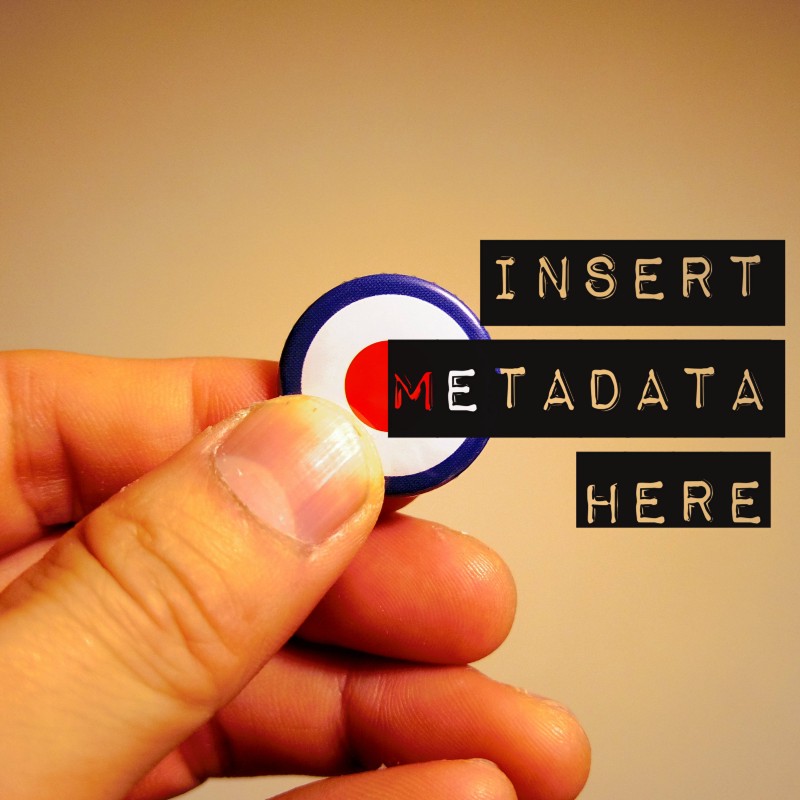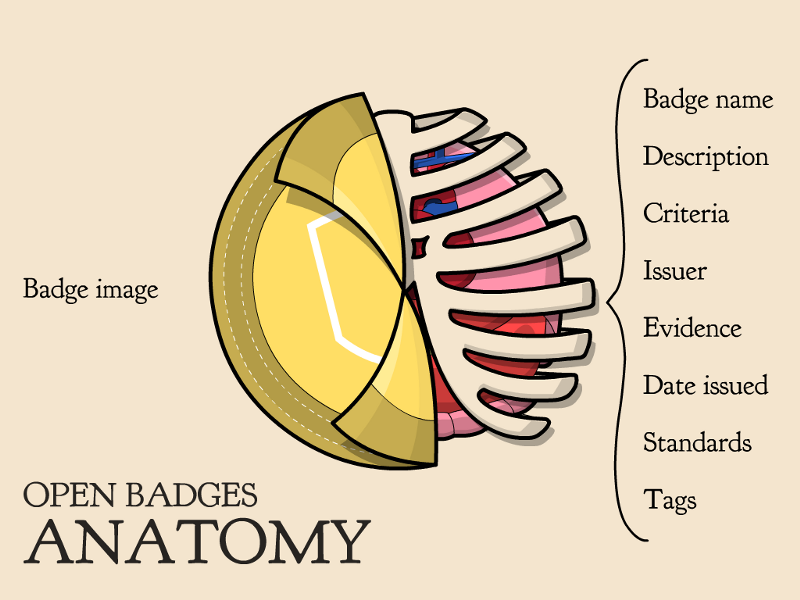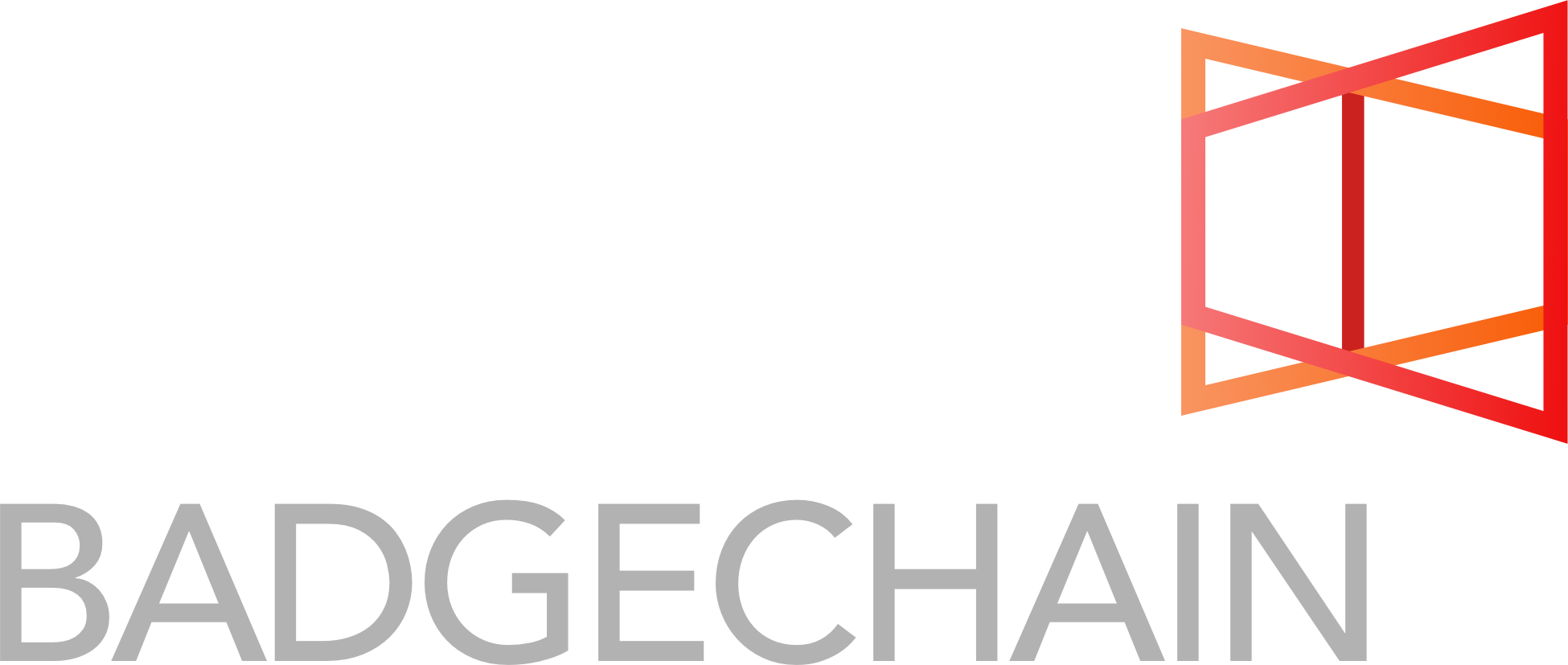Digital Badges Overview
March 10th, 2015 | W. Ian O'Byrne
If you’ve come across the BadgeChain site, or our Medium pub and you’re intrigued, you most likely already know what Digital Badges are all about. If you don’t…This post is intended to provide an overview of information about digital badges.
Please keep in mind that this is merely a primer on digital badges, open badges, etc. If you want to really understand…get involved in the Open Badges 101 course.
What is a digital badge?
Digital badges are visual representations of learner accomplishments. They are symbols or indicators of an accomplishment, skill, quality, or interest. They are symbolic representations that can be easily shared and communicated across varied academic, social, and work-related contexts.
Unlike traditional scout badges or other credentials such as school grades or transcripts, digital badges can contain specific claims regarding what the earner learned or did and detailed evidence supporting those claims.
Dan Hickey defines digital badges as:
Badges contain detailed claims about learning, links to evidence of learning, and they’re shareable over the web.
Please review the video overview that details elements of a badge.
What is an open badge?
Open badges are digital badges are designed to be collected by individual learners in their digital backpack and displayed across different contexts and environments. A digital backpack is an online space where learners can collect and display their badges online. An open badge is a digital image or digital badge that has metadata ‘baked’ into it.
As Doug Belshaw indicates, once the metadata has been baked into the image to create the open badge, it cannot be removed from the resultant “cake.” Open badges have the potential to form living portfolios for recognizing personal competencies and achievements while communicating these between education and work.
What is metadata?
A digital badge is really a graphic with a ton of “metadata” behind it. Metadata is data about data, or more specifically, data that contains an underlying definition or description.
The real power in the badge is in the metadata associated with it. The metadata is a series of links and data that indicates what the badge is for, what criteria were used to award the badge, and any standards associated with the badge. Image and metadata work together to form a graphical representation of some collection of knowledge, skills, dispositions, or competencies that have been determined by the issuers.

How do you earn a badge?
To earn a badge, in most instances you need to “pledge” for a badge as a pathway to a goal, or to identify an accomplishment. In this, there needs to be some formal announcement from a student that they are working toward earning a badge, or that they believe they have conducted work that would earn them a badge.
After they have completed the requirements for the badge, a review process is typically conducted to see if they earned the badge. This review might consist of a self-review, a peer-review, or an assessment by experts. All of this information is made openly available by the badge issuer, and is sometimes included in the metadata for the badge.
One of the benefits of open digital badges is that you can often access and review the work, reflections, and feedback from the review given to individuals that have already earned the badge you’re pledging for. In this process, you are able to see the knowledge, skills, and dispositions the badge issuer is looking to recognize.
In some instances, digital badges are awarded as a form of “stealth badge”, or an award given for criteria unknown to the earner. These stealth badges are often viewed as a surprise by the earner.
Please review the following video to learn more about badging ecosystems, and the possible value of badges.
How do you issue a badge?
Anyone can issue open digital badges, either by running a badge creation application on their own web server or signing up with an issuing platform. Before considering the technical requirements, it is important to design badge systems to fit your goals as you design a badging program.
As you start building your badge, and possibly a full badge ecosystem, you might start with this template which was developed by digitalME to use as develop the individual badges.
As indicated earlier, badges are awarded as a way to use a layer of technology and a layer of social media to document learning by an individual. To ensure that you don’t confuse learners, and eventual earners of your badges, you’ll need a certain level of “granularity” before beginning to award them to students. In plain speak, it needs to be crystal clear as to what the badges mean, and how people can earn them.
To learn more about assumptions as you create and issue badges, please review the following video from Doug Belshaw.
We need to indicate that digital badges may be open, or they may exist in closed ecosystems. An example of this is a school or organization that wants to ensure the privacy of their users, and as a result does not openly share online the badges, metadata, and the users in the badge ecosystem.
In an open badging ecosystem, Nate Otto indicates that:
Open badges are visual symbols of accomplishment that include detailed metadata describing that accomplishment and featuring automated verification of their authenticity.
In closing
There are many other factors associated with developing and awarding digital badges, or a full badge ecosystem. Hopefully this primer helps you start to wrap your head around digital and open badges. Please reach out, or comment on this post for more support.
Like what you see here? Sign up for my newsletter to stay on top of weekly events in literacy, technology, & education.
Originally published at W. Ian O’Byrne.

Follow Us